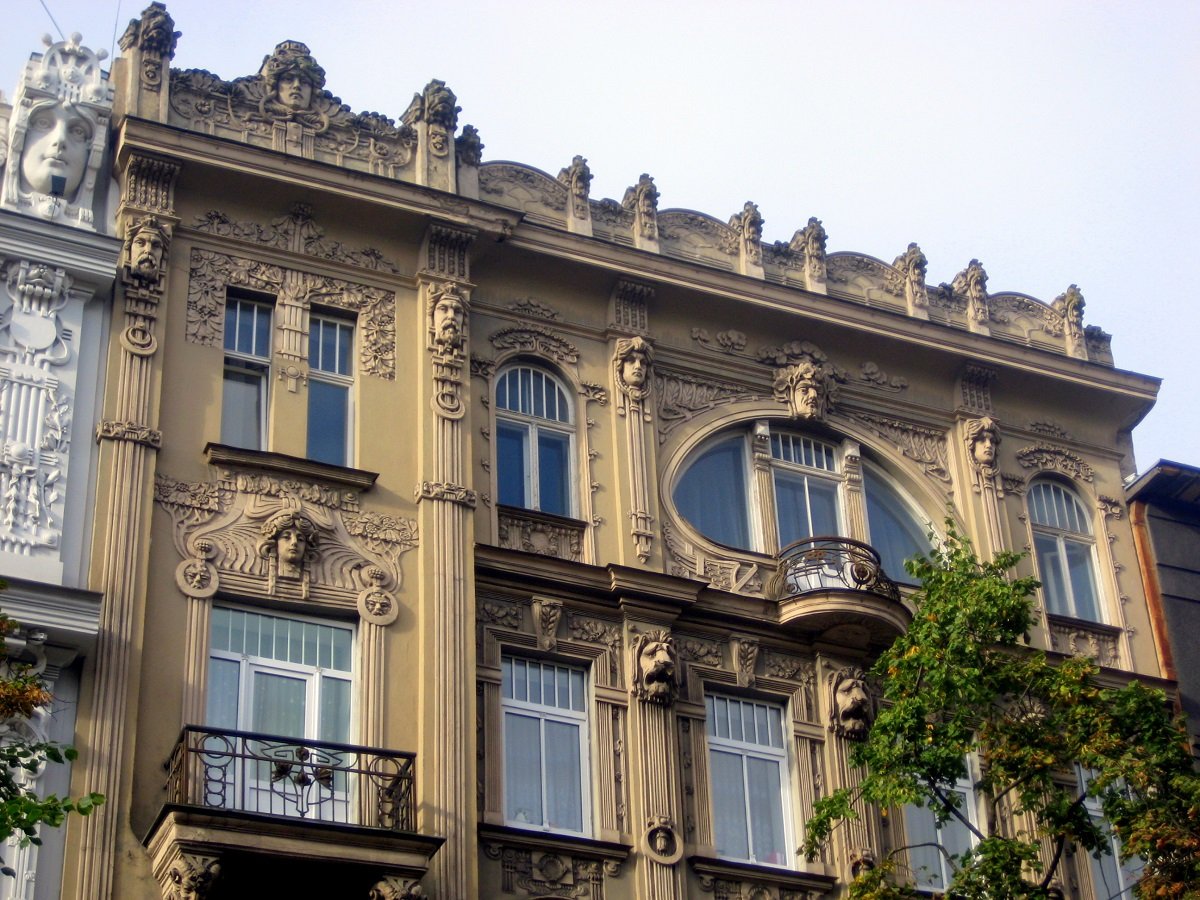#6003. Luxurious Art Nouveau Facade with Abundant Sculptural Mascarons

Before us stands an outstanding example of Art Nouveau architecture, showcasing an incredibly rich plastic decoration on its facade. The building features the characteristic asymmetry and abundance of sculptural elements typical of this style. Particularly noteworthy are the numerous mascarons — decorative sculptural elements in the form of masked faces that adorn the spaces between windows and support the cornice.
The facade is painted in a subdued golden-beige color, which emphasizes the sophistication of the architectural solution. The upper part of the building is crowned with an elaborate decorative cornice with protruding elements and sculptural details. The window openings are diverse in shape — there are both rectangular and arched windows, framed by elegant platbands.
Structural features include small balconies with wrought iron railings, characteristic of the turn of the 19th-20th centuries, and a semicircular bay window with panoramic glazing. The richness of the facade's plastic solution is achieved through a combination of various reliefs — from deep to almost flat — creating an expressive play of light and shadow on the building's surface.
Floral motifs intertwine with anthropomorphic forms, creating an organic composition typical of Art Nouveau philosophy with its reference to natural forms and aspiration for a synthesis of arts. This facade represents a true urban treasury of decorative and applied art from the early 20th century.